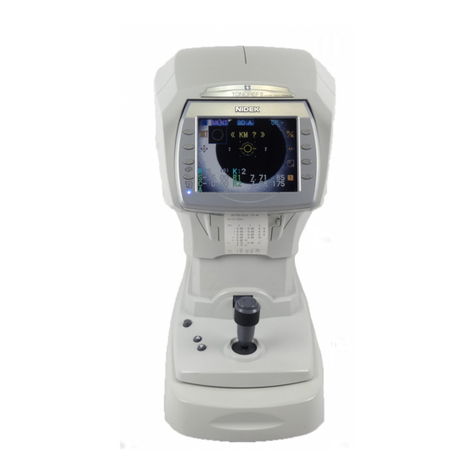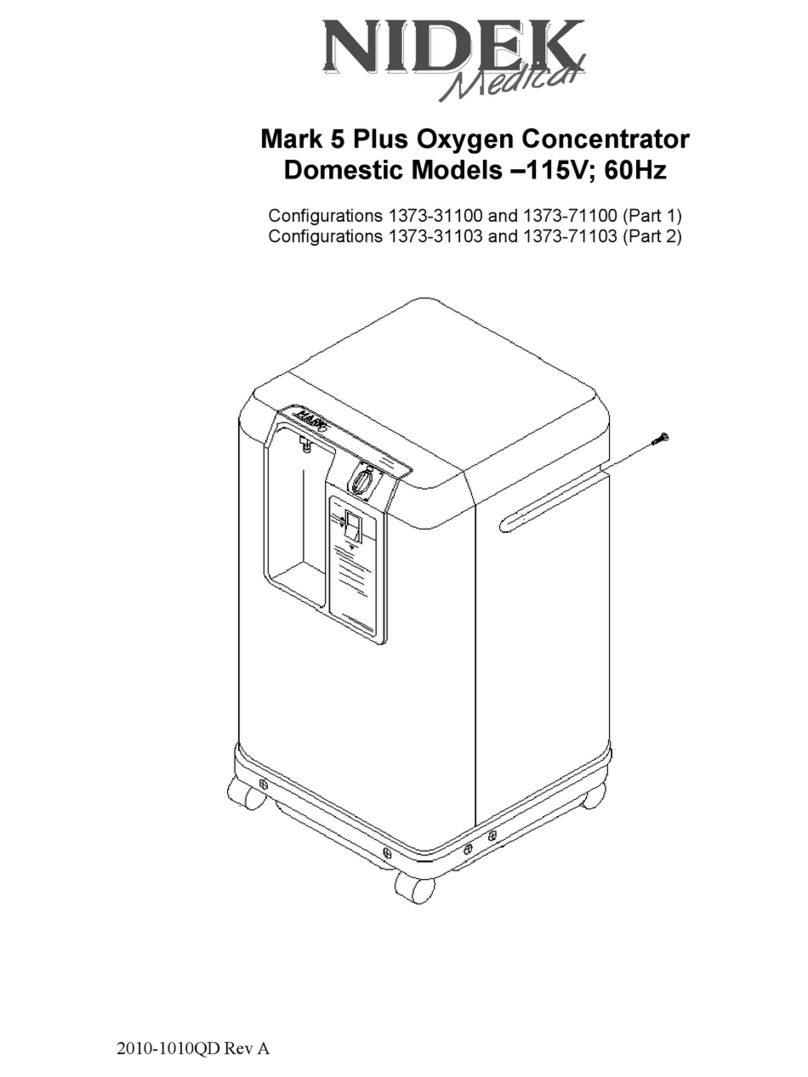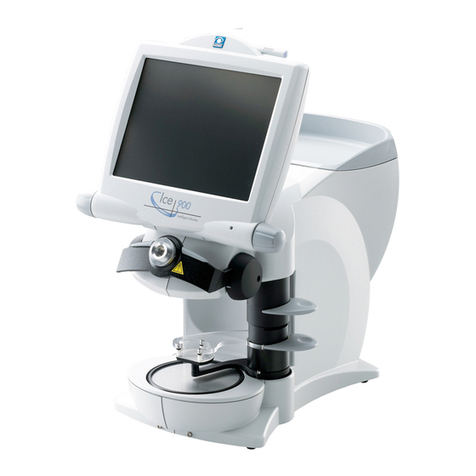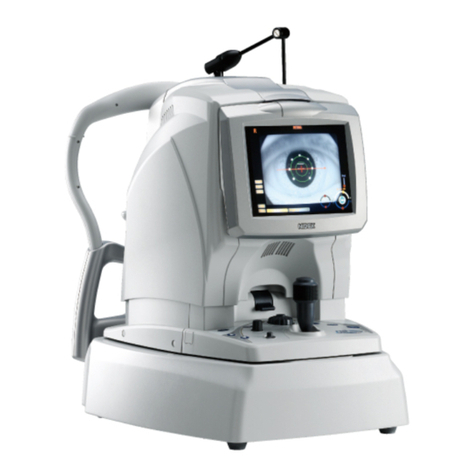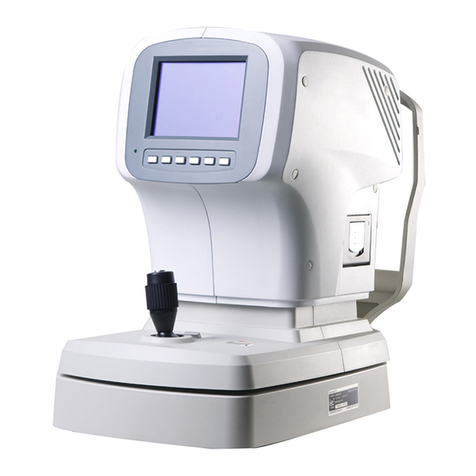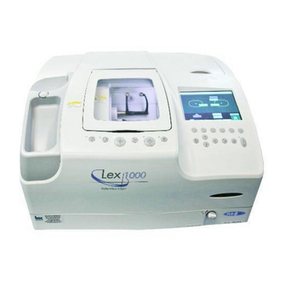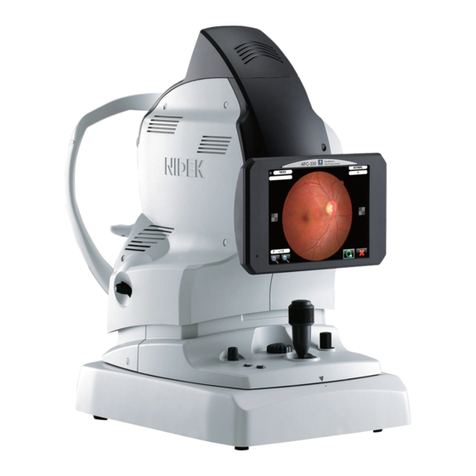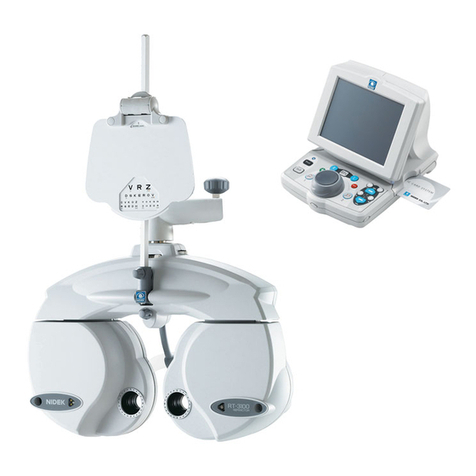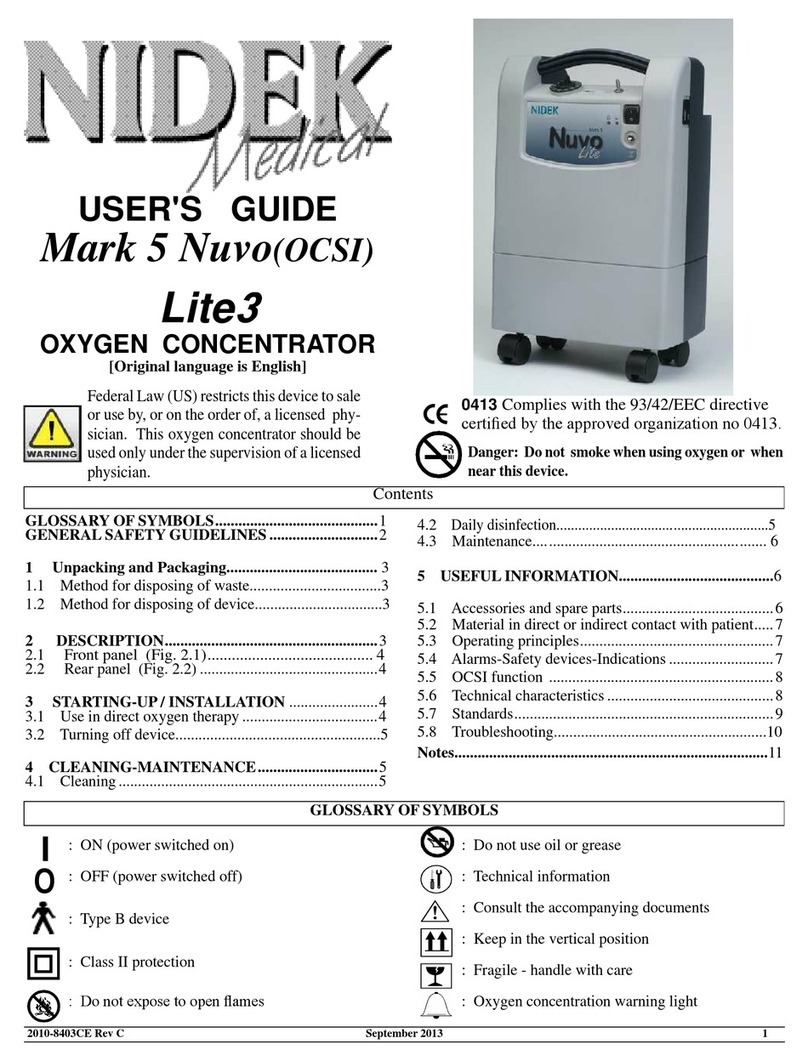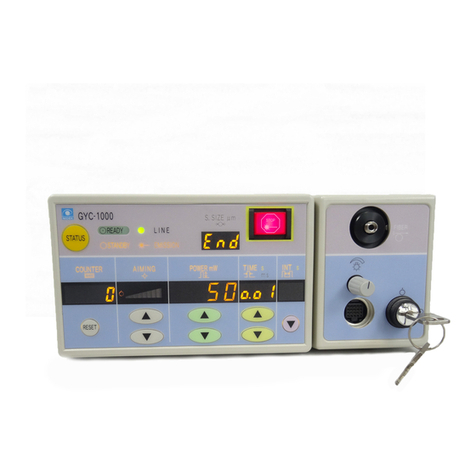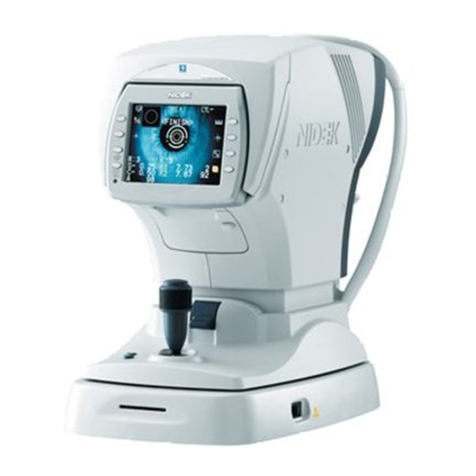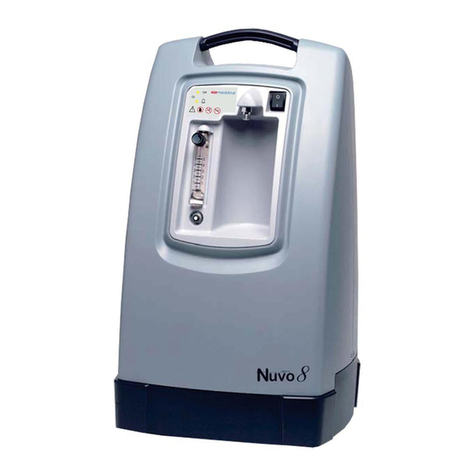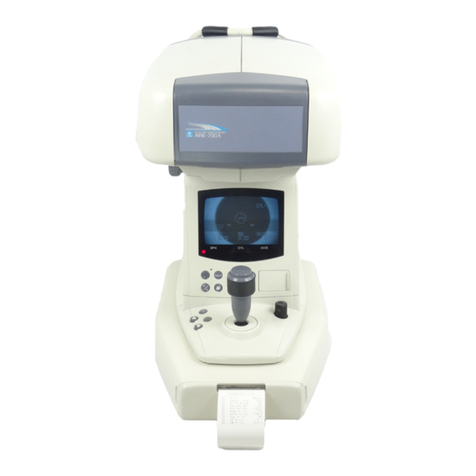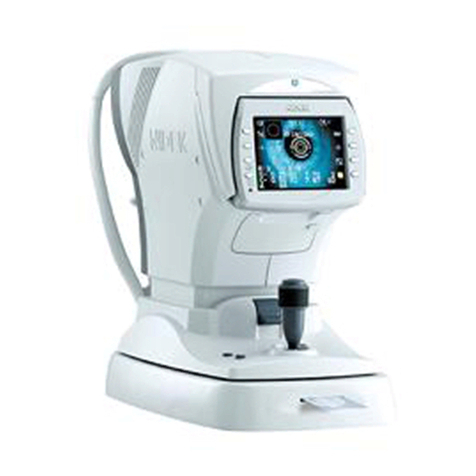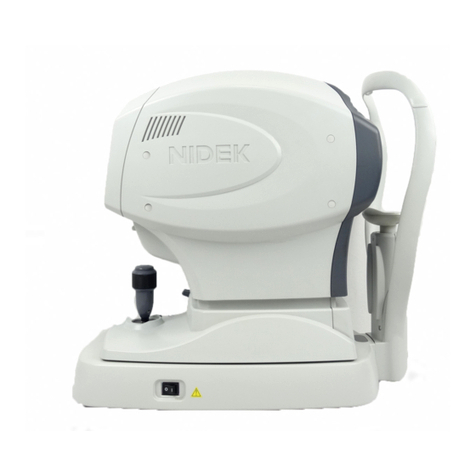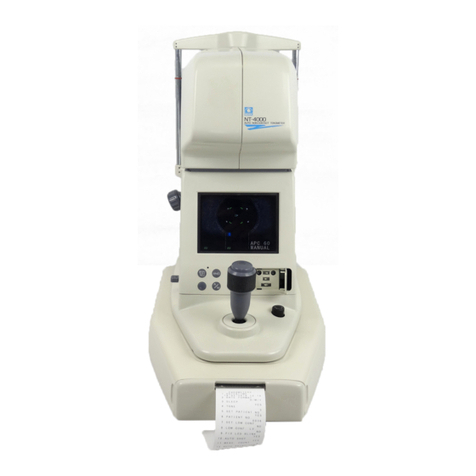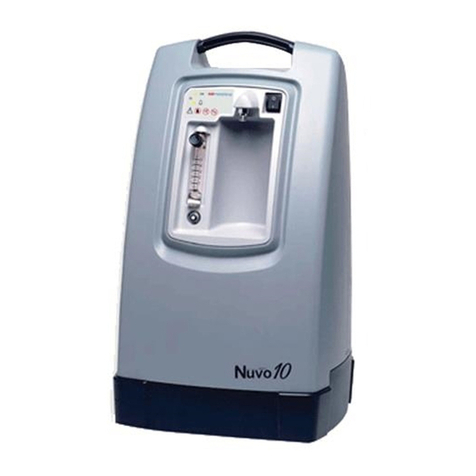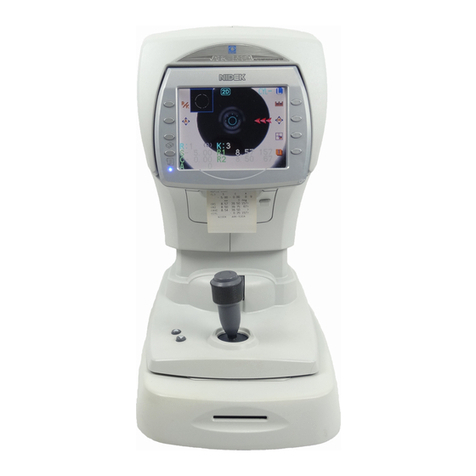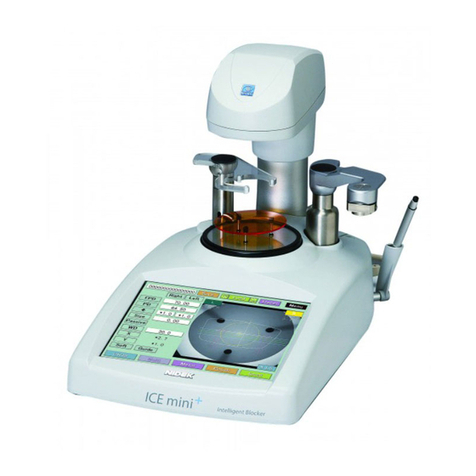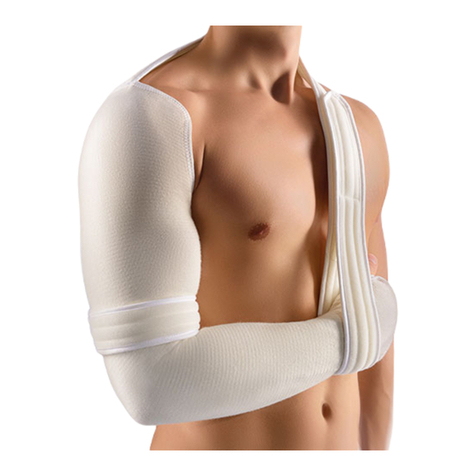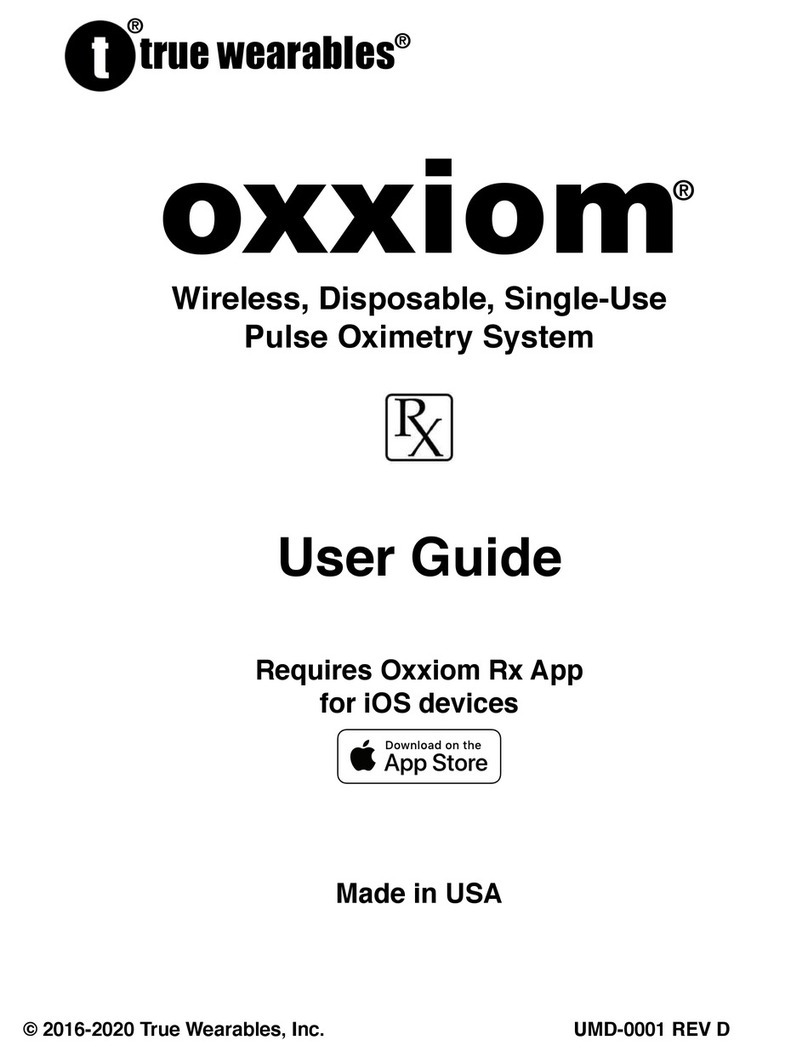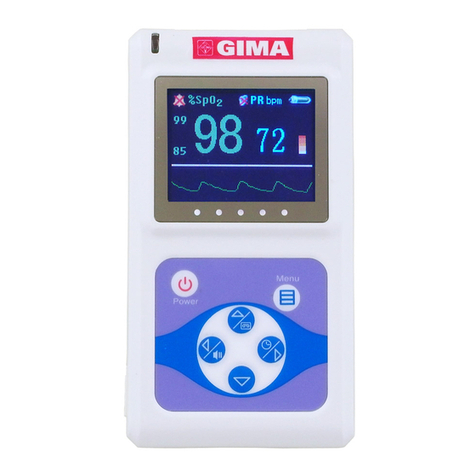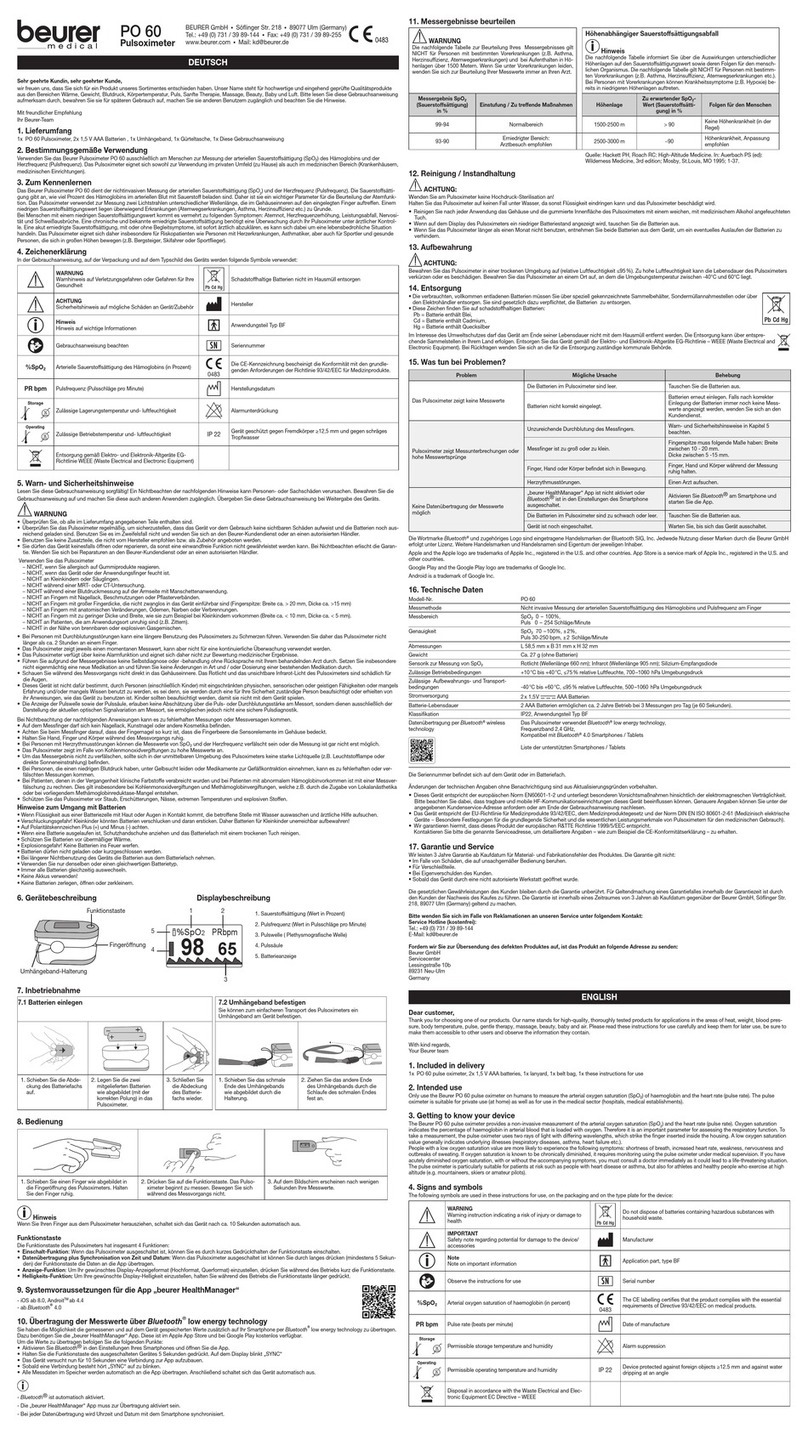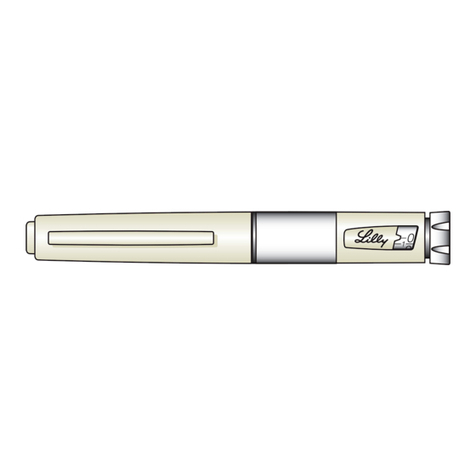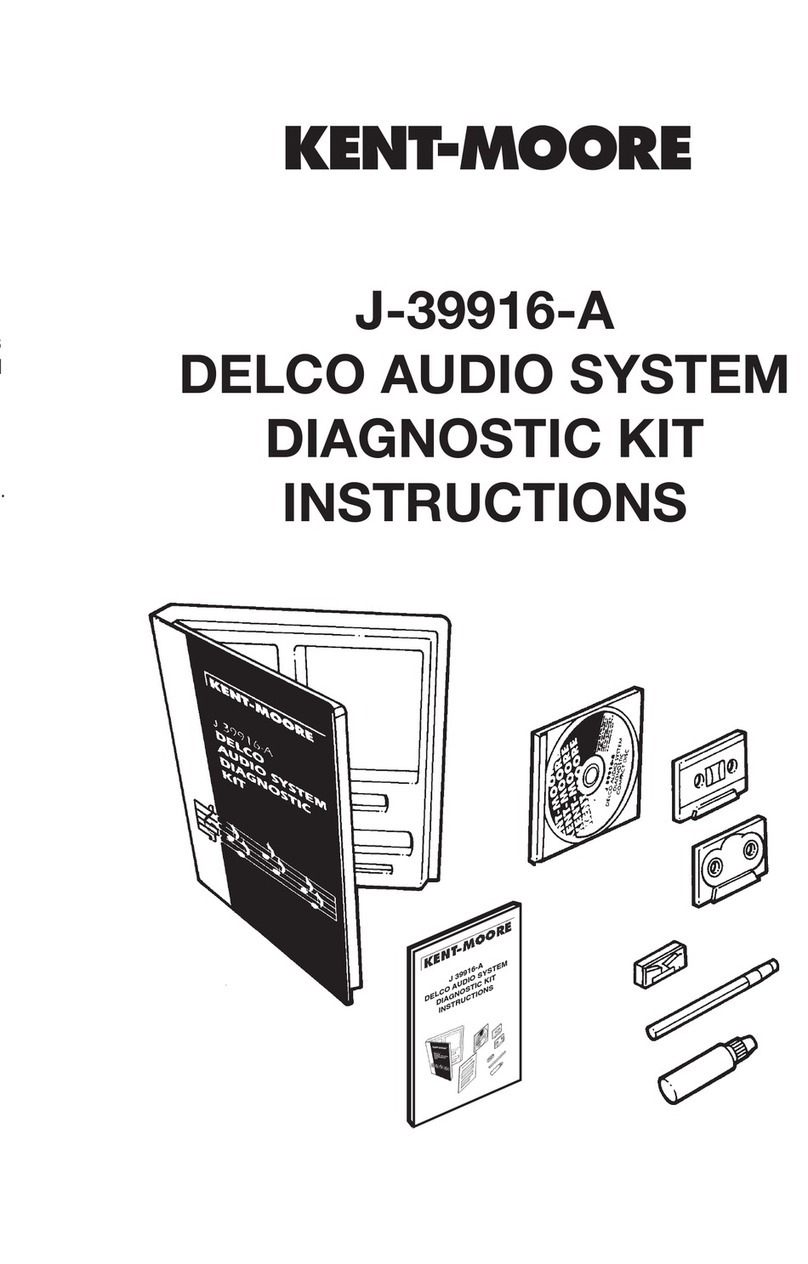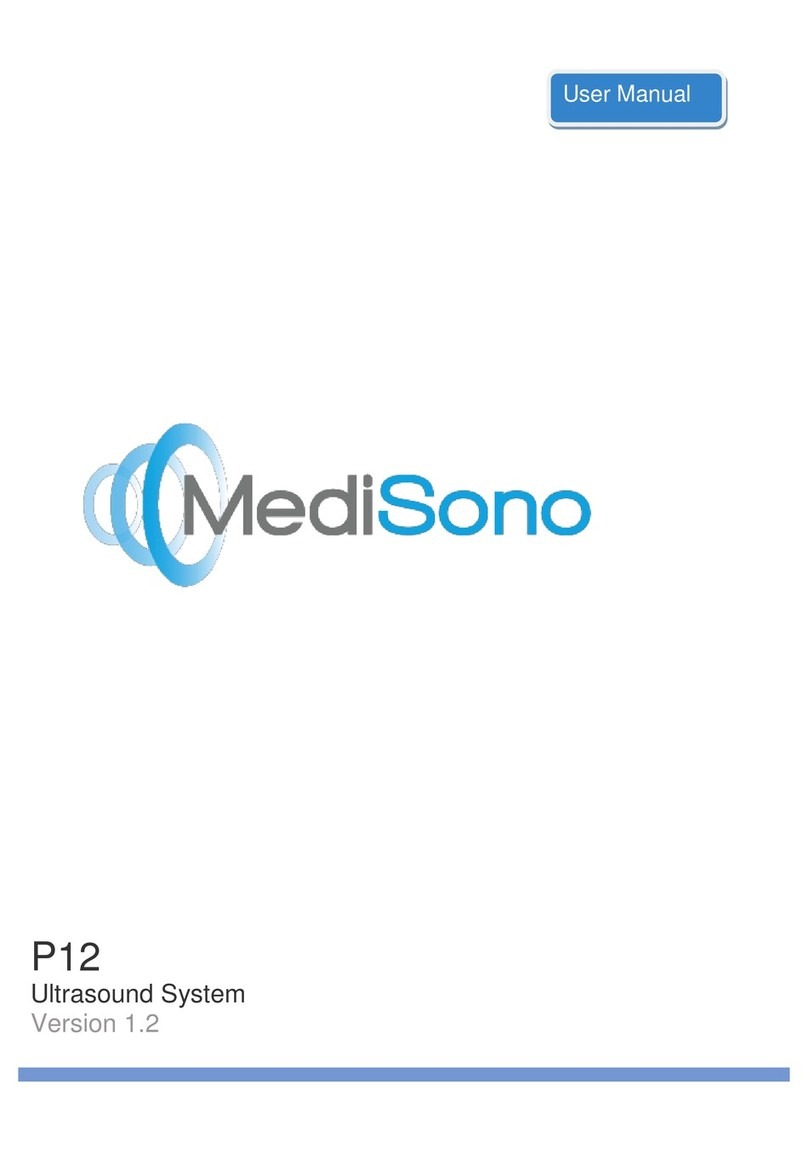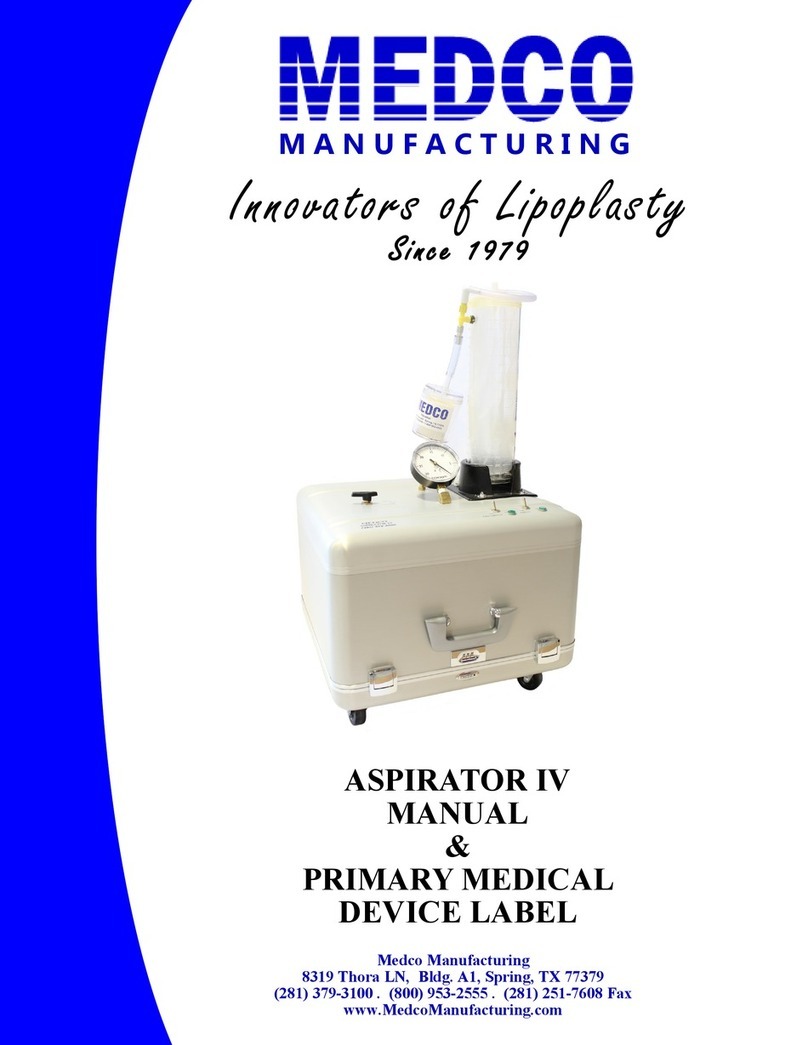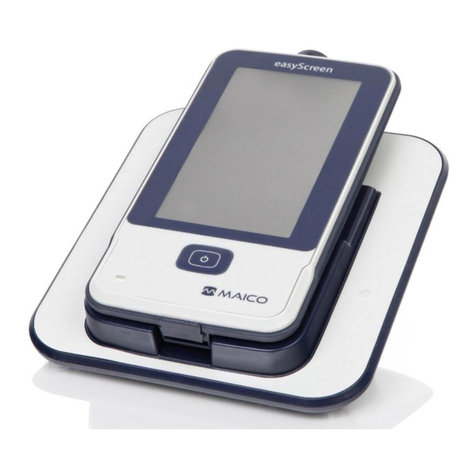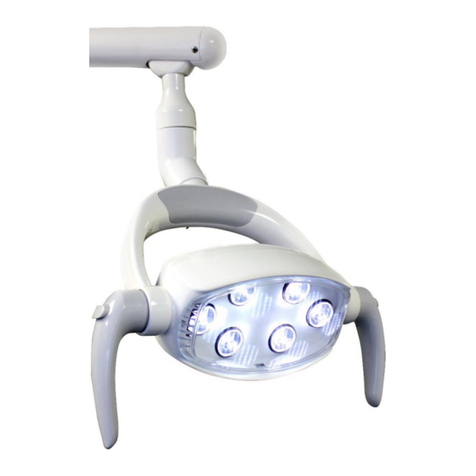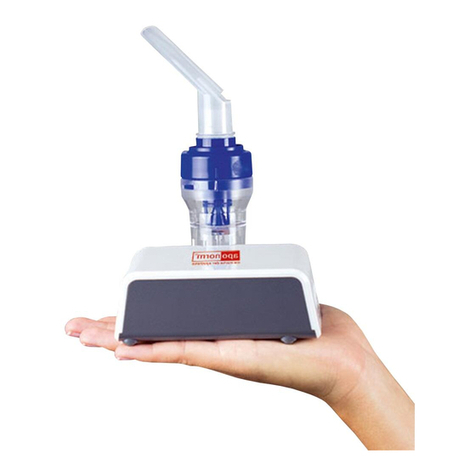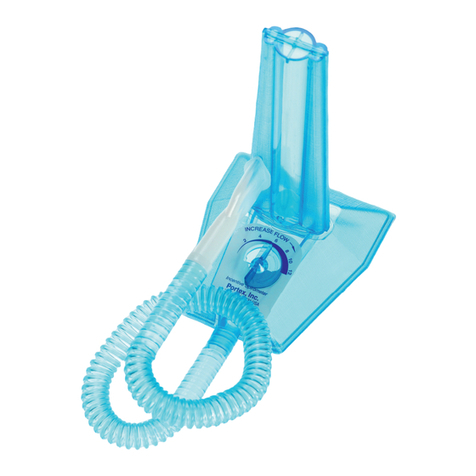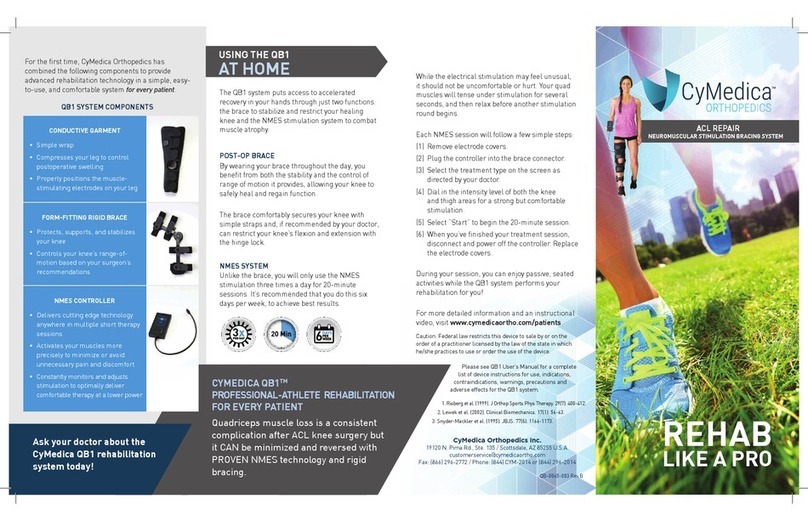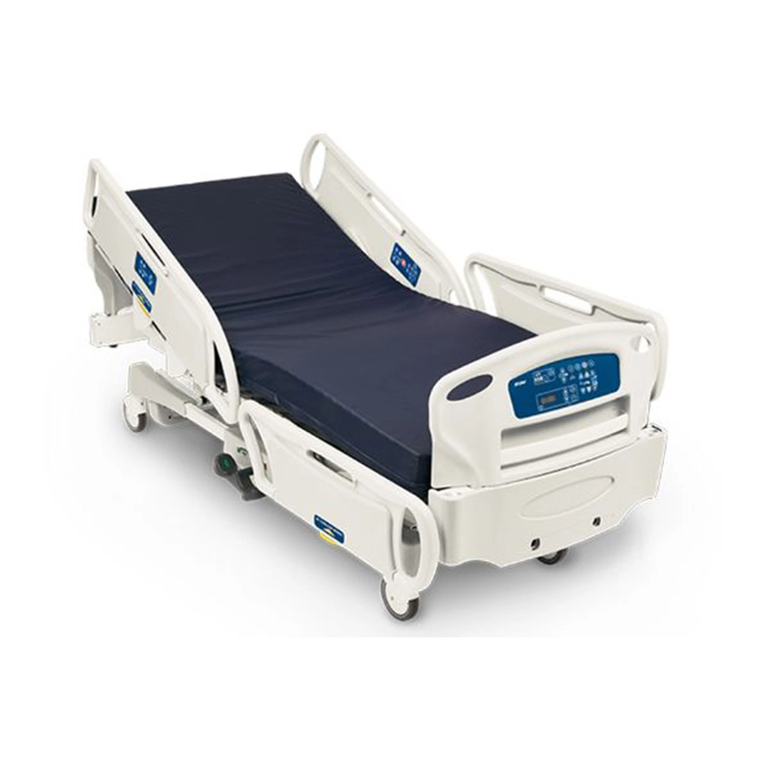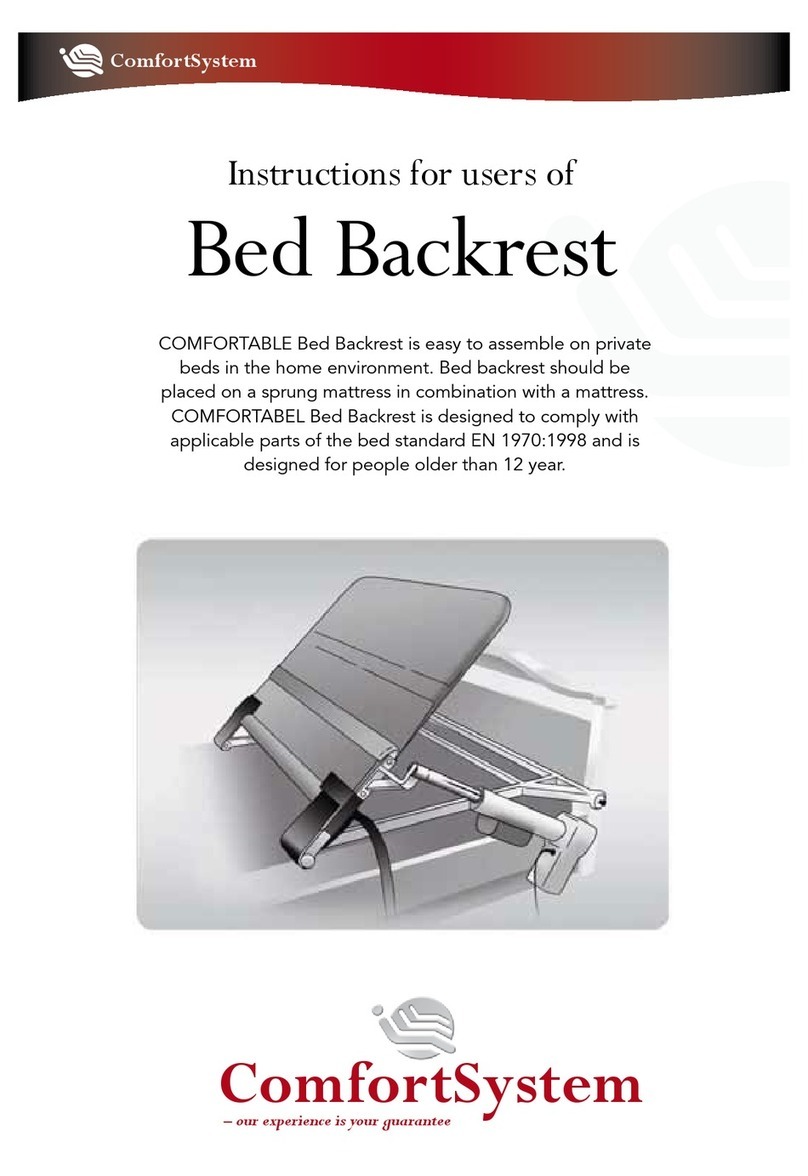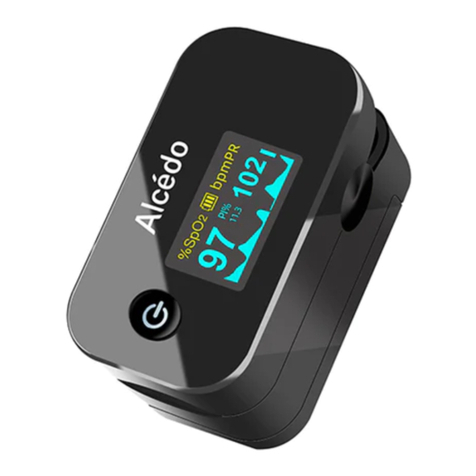
2010-8407 Rev E April 30, 2018 Page 6of 35
3.0 About the Mark 5 Nuvo Lite Family
3.1 Intended Use and Operation
The Mark 5 Nuvo Lite Family (Nuvo Lite and Nuvo Lite 3) Oxygen Concentrators are used as a means of providing
continuous oxygen enriched product gas for patients, adolescent to geriatric, suffering from health conditions that
cause low levels of oxygen in the blood (hypoxaemia).
The Mark 5 Nuvo Lite Family begins their operation with air being pulled into the external air intake filter. This
filtered air enters the compressor via a suction resonator and fine filter. Pressurized air then exits the compressor
and passes through a heat exchanger, which reduces the temperature of the compressed air. Next, an electronic
valve system directs the air into one of two tubes that contain molecular sieve (sieve beds). The molecular sieve
adsorbs (physically attracts) the nitrogen from the air as it is pushed through the sieve beds. This allows the oxygen
enriched product gas to pass through before being delivered to the pressure regulator. As one tube is generating the
product gas, the other is being purged of the adsorbed nitrogen, this process is called pressure swing adsorption
(PSA). After passing through the regulator, the rate of product gas being delivered to the patient is set by the flow
meter adjusting valve. Finally, it passes through a fine particle filter and then over a sensor that detects the oxygen
concentration of the product gas before it exits the device through a fire resistant outlet.
Make sure during operation and after shut down that the cannula is facing away from soft surfaces and
clothing. Excess oxygen can accumulate and cause ignition if exposed to a spark or open flame.
Use the power cord provided.
Check that the electrical characteristics of the power outlet used match those indicated on the
manufacturer’s technical label on the rear panel of the device.
This unit may be equipped with a polarized plug. That is one blade wider than the other. If it does not fit
into the outlet, reverse the plug. If it still does not fit, contact a qualified electrician. Do not defeat this
safety feature.
3.2 Installation and Storage
The device should be operated in a dry area, with an ambient temperature between 10°C to 40°C (50°F to 105°F) at
15-95% relative humidity. The device can be operated at an altitude of up to 2200m (7500ft) at a temperature of
21°C (70°F) without causing product degradation.
DO NOT use in explosive atmosphere.
To avoid risk of fire and explosion the concentrator should be kept away from heat sources, incandescent
sources, solvents, Aerosols, etc.
Unit should be placed and operated in a well-ventilated space that is free of pollutants or fumes and
protected from the elements with adequate lighting.
Unit should be placed and operated in a space where the position and storage of the mains cable and
oxygen tubing do not present a tripping hazard.
The mains cable should be easily accessible for disconnection.
For patient safety and benefit, no modification to the equipment is allowed.
It is also not recommended to interconnect the device with any equipment or accessories not specified in
this guide.
Device must have power to operate.
In the event of power loss and for continued operation a backup source is recommended.
Do not use in a specifically magnetic environment (MRI, X-ray, etc.). May cause device malfunction.
We recommend against the use of extension cords and adapters, as they are potential sources of sparks
and fire.




















